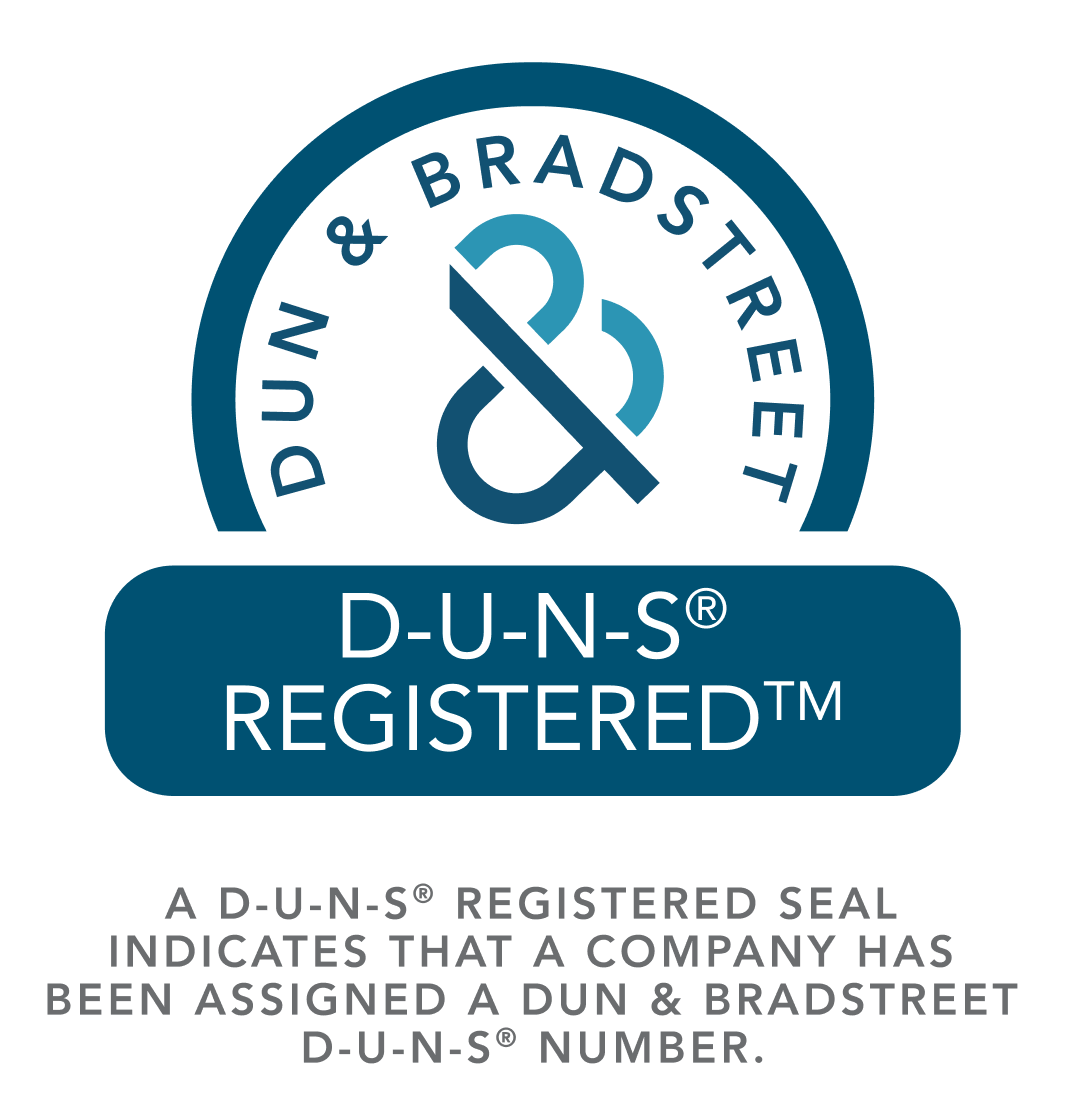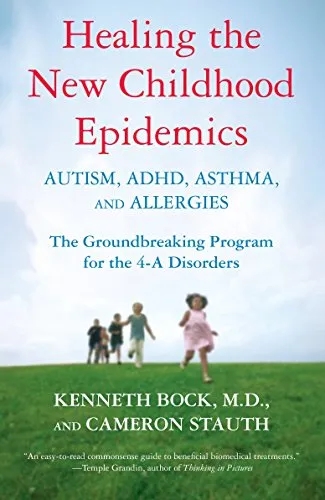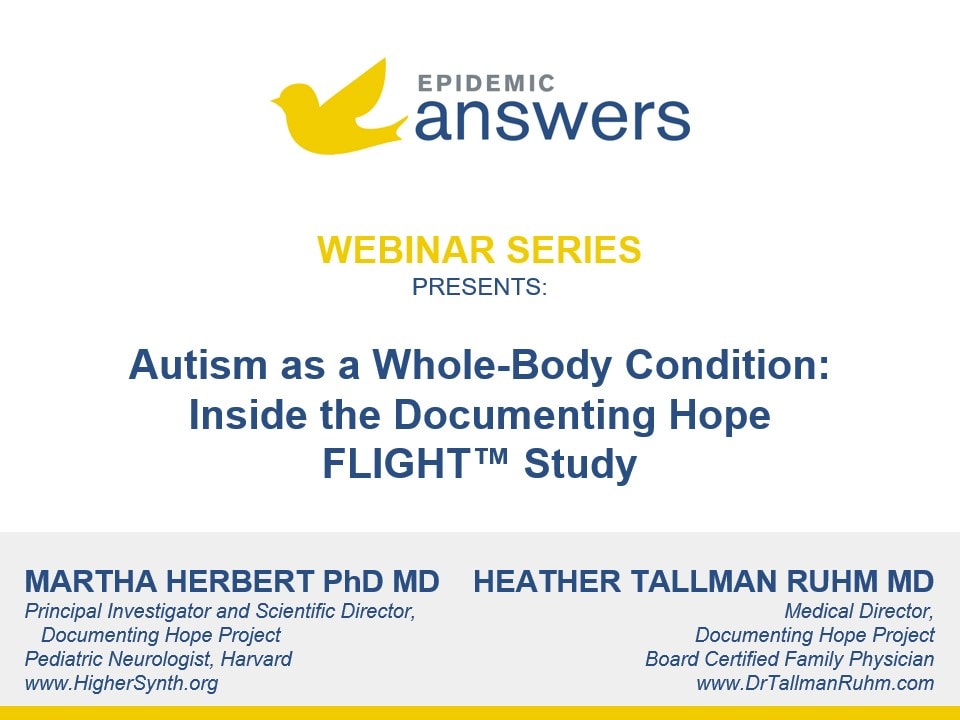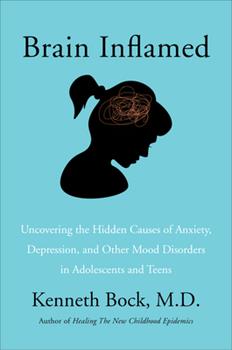The Four Catastrophic Changes
Dr. Bock believes that the significantly increased rates of the new childhood epidemics of autism, ADHD, allergies and asthma – which he calls the “4-A disorders” – are caused by four things:
- A proliferation of toxins
- Nutritional deficiencies
- An increase of toxins due to routine pediatric medical procedures
- A decreased ability to detoxify, especially due to a methylation defect
A Biomedical Approach
By addressing these root causes with a biomedical approach, which he calls The Healing Program, symptoms often improve. Biomed, as it’s often called, entails the use of specialized as well as common lab tests of blood, urine, hair and stool to look for common markers that can be addressed with supplements, medications, therapies, diet and lifestyle.
Bock’s Healing Program consists of:
- Nutritional therapy that includes:
- Clean, whole-foods
- An elimination of allergenic foods
- Avoidance of yeast-proliferating foods
- A gluten-free, casein-free diet
- A low-glycemic diet to control blood sugar
- Supplementation therapy that includes:
- Methylated B vitamins to support detoxification in those with an MTHFR defect. Most children with these disorders have at least one copy of this mutation.
- Metabolism-supporting supplements
- Energizing supplements to counteract mitochondrial dysfunction
- Anti-microbial herbs
- Probiotics
- Brain-supporting supplements
- Detoxification therapies such as:
- Heavy-metal elimination
- The miracle of methylation
- Stimulating organs of detoxification and elimination
- Targeted medications such as:
- Antifungals
- Antibiotics
- Antivirals
- Anti-inflammatories
Conclusions
Even though 16 years have elapsed since the publication of this book in 2007, it has stood the test of time. However, advancements have been made in genomic and microbiome testing as well as in other interventions such as healing diets, biotoxin illness therapy and microbiome transplant therapy in the intervening years. Thus, there are many more options that can be explored before choosing to use medications. Often, these medications are now used as a last resort, rather than the first.
Bock and Strauth skillfully weave in the stories of children whose cases exemplify each of these conditions, and 15 case studies are included in addition. Readers can often see glimpses of their own children in these stories.
Bock’s most interesting thesis is that these four conditions represent a spectrum, with allergies on one end and autism on the other, with asthma and ADHD in between. As you read the book, you’ll understand why this is so. Ultimately, you may come to believe, as we do, that these diagnoses are only labels and that true healing comes from addressing the root causes of these conditions.
About Kenneth Bock MD
As a leader in integrative medicine, Dr. Kenneth Bock has accumulated over 35 years of experience diagnosing the root cause of chronic illnesses and restoring balance to his patients’ immune systems.
He founded Bock Integrative Medicine in response to the increasing need for board-certified medical providers who take a unique “whole body” approach to diagnose and treat chronic illness.
Dr. Bock is a well-respected integrative medicine doctor and autism expert who focuses on the treatment of autism and co-occurring conditions, PANS/PANDAS,ITABI, tick-borne illnesses, and adult conditions such as chronic fatigue syndrome, fibromyalgia, and heart disease.

He integrates alternative modalities with conventional medicine into a comprehensive integrative medicine practice. His natural curiosity and expertise at tackling medical problems that have been difficult to diagnose and treat make him sought after by patients throughout the world as an expert at tackling complex medical problems.
After graduating Summa Cum Laude from the State University of New York at Buffalo in 1973, Dr. Bock went on to earn his D with Honor from the University of Rochester School of Medicine in 1979.
He is board-certified in Family Medicine, a Certified Nutrition Specialist, and a Fellow of the American Academy of Family Practice, the American College of Nutrition, and the American College for Advancement in Medicine, of which he is a former President. Dr. Kenneth Bock is also a faculty member of the Institute for Functional Medicine (IFM). You can find out more about him and his work at his website: www.bockintegrative.com
About Cameron Stauth

Cameron Stauth is an American author and journalist best known for his narrative nonfiction accounts of true stories, and for his medical books. He has written over 25 books, and his writing has appeared in numerous major national publications.
A former magazine editor and columnist, several of Stauth’s books have been national and international bestsellers, and his books have been published in nine languages and 21 countries. The New York Times Review of Books has called him “a talented and graceful writer, and a tireless reporter.”
Mr. Stauth lives with his wife and two children in Portland, Oregon. You can find out more about him at his website: www.cameronstauth.com
Still Looking for Answers?
Visit the Epidemic Answers Practitioner Directory to find a practitioner near you.
Join us inside our online membership community for parents, Healing Together, where you’ll find even more healing resources, expert guidance, and a community to support you every step of your child’s healing journey.
Sources & References
Adams, J.B., et al. Comprehensive Nutritional and Dietary Intervention for Autism Spectrum Disorder-A Randomized, Controlled 12-Month Trial. Nutrients. 2018 Mar 17;10(3).
Adams, J.B., et al. Effect of a vitamin/mineral supplement on children and adults with autism. BMC Pediatr. 2011;11:111.
Adams, J.B., et al. Mercury in first-cut baby hair of children with autism versus typically-developing children. Toxicological & Environmental Chemistry. 2007 Jun;70(12):1046-51.
Adams, J.B., et al. Mercury, Lead, and Zinc in Baby Teeth of Children with Autism Versus Controls. Journal of Toxicology and Environmental Health. 2007 Jun;70(12):1046-51.
Adams, J.B., et al. Nutritional and metabolic status of children with autism vs. neurotypical children, and the association with autism severity. Nutr Metab (Lond). 2011 Jun 8;8(1):34.
Alabdali, A., et al. A key role for an impaired detoxification mechanism in the etiology and severity of autism spectrum disorders. Behav Brain Funct. 2014;10:14.
Alabdali, A., et al. Association of social and cognitive impairment and biomarkers in autism spectrum disorders. J Neuroinflammation. 2014;11:4.
Ashraghi, R.S., et al. Early Disruption of the Microbiome Leading to Decreased Antioxidant Capacity and Epigenetic Changes: Implications for the Rise in Autism. Front. Cell. Neurosci., 15 Aug 2018.
Ashwood, P., et al. Elevated plasma cytokines in autism spectrum disorders provide evidence of immune dysfunction and are associated with impaired behavioral outcome. Brain Behav Immun. 2011 Jan;25(1):40-5.
Ashwood, P., et al. The immune response in autism: a new frontier for autism research. Journal of Leukocyte Biology.2006 Jul;80(1):1-15.
Atladóttir, H.Ó., et al. Association of family history of autoimmune diseases and autism spectrum disorders. Pediatrics. 2009 Aug;124(2):687-94.
Atladóttir, H.Ó., et al. Autism after infection, febrile episodes, and antibiotic use during pregnancy: an exploratory study. Pediatrics. 2012 Dec;130(6):e1447-54.
Baker, S. Canaries and Miners. Alternative Therapies in Health and Medicine. Nov-Dec 2008;14(6):24-6.
Barrett, B. Substantial lifelong cost of autism spectrum disorder. J Pediatr. 2014;165(5):1068-9
Bateman, C. Autism–mitigating a global epidemic. S Afr Med J. 2013;103(5):276-7
Bitsika, V., et al. Hypothalamus-pituitary-adrenal axis daily fluctuation, anxiety and age interact to predict cortisol concentrations in boys with an autism spectrum disorder. Physiol Behav. 2015;138:200-7
Blaylock, R.L. A possible central mechanism in autism spectrum disorders, part 1. Altern Ther Health Med. 2008 Nov-Dec;14(6):46-53.
Blaylock, R.L. A possible central mechanism in autism spectrum disorders, part 2: immunoexcitotoxicity. Altern Ther Health Med. 2009 Jan-Feb;15(1):60-7.
Blaylock, R.L. A possible central mechanism in autism spectrum disorders, part 3: the role of excitotoxin food additives and the synergistic effects of other environmental toxins. Altern Ther Health Med. 2009 Mar-Apr;15(2):56-60.
Blaylock, R.L., et al. Immune-glutamatergic dysfunction as a central mechanism of the autism spectrum disorders. Curr Med Chem. 2009;16(2):157-70.
Borre, Y.E., et al. Microbiota and neurodevelopmental windows: implications for brain disorders. Trends Mol Med. 2014 Sep;20(9):509-18.
Bouder, et al. Brief report: Quantifying the impact of autism coverage on private insurance premiums. J Autism Dev Disord. 2009;39(6):953-7
Bradstreet, et al. Biomarker-guided interventions of clinically relevant conditions associated with autism spectrum disorders and attention deficit hyperactivity disorder. Altern Med Rev. 2010;15(1):15-32
Bransfield, R.C., et al. The association between tick-borne infections, Lyme borreliosis and autism spectrum disorders. Medical Hypotheses. 2008;70(5):967-74.
Brown, et al. Observable essential fatty acid deficiency markers and autism spectrum disorder. Breastfeed Rev. 2014;22(2):21-6.
Buescher, et al. Costs of autism spectrum disorders in the United Kingdom and the United States. JAMA Pediatr. 2014;168(8):721-8.
Buie, T., et al. Evaluation, diagnosis, and treatment of gastrointestinal disorders in individuals with ASDs: a consensus report. Pediatrics. 2010 Jan;125 Suppl 1:S1-18.
Buie, T., et al. Recommendations for evaluation and treatment of common gastrointestinal problems in children with ASDs. Pediatrics. 2010 Jan;125 Suppl 1:S19-29.
Bull, G., et al. Indolyl-3-acryloylglycine (IAG) is a putative diagnostic urinary marker for autism spectrum disorders. Med Sci Monit. 2003;9(10):CR422-5.
Camilleri, M. Serotonin in the gastrointestinal tract. Curr Opin Endrocrinol Diabetes Obes. 2009 Feb;16(1):53-9.
Connolly, A.M., et al. Serum autoantibodies to brain in Landau-Kleffner variant, autism, and other neurologic disorders. The Journal of Pediatrics. 1999 May;134(5):607-13.
Critchfield, et al. The potential role of probiotics in the management of childhood autism spectrum disorders. Gastroenterol Res Pract. 2011;2011:161358.
Cubala-Kucharska M. The review of most frequently occurring medical disorders related to aetiology of autism and the methods of treatment. Acta Neurobiol Exp (Wars). 2010;70(2):141-6.
Dale, R.C., et al. Encephalitis lethargica syndrome: 20 new cases and evidence of basal ganglia autoimmunity. Brain. 2004 Jan;127(Pt 1):21-33.
Darling, A.L., et al. Association between maternal vitamin D status in pregnancy and neurodevelopmental outcomes in childhood: results from the Avon Longitudinal Study of Parents and Children (ALSPAC). Br J Nutr. 2017 Jun;117(12):1682-1692.
Dave, D., et al. The effect of an increase in autism prevalence on the demand for auxiliary healthcare workers : evidence from California. Cambridge, MA: National Bureau of Economic Research; 2012. 37 p.p.
Deisher, T.A., et al. Impact of environmental factors on the prevalence of autistic disorder after 1979. J Public Health and Epidemiology. Sep 2014;6(9):271-286.
de Magistris, et al. Alterations of the intestinal barrier in patients with autism spectrum disorders and in their first-degree relatives. J Pediatr Gastroenterol Nutr. 2010;51(4):418-24
Deth, R., et al. How environmental and genetic factors combine to cause autism: A redox/methylation hypothesis. Neurotoxicology. 2008;29(1):190-201
Elamin, N.E., et al. Brain autoantibodies in autism spectrum disorder. Biomark Med. 2014;8(3):345-52
El-Ansary, A., et al. Neuroinflammation in autism spectrum disorders. J Neuroinflammation. 2012;9:265.
El-Ansary, A., et al. Lipid mediators in plasma of autism spectrum disorders. Lipids Health Dis. 2012;11:160.
Egset, K., et al. Magno App: Exploring Visual Processing in Adults with High and Low Reading Competence. Scandinavian Journal of Educational Research. 07 Jan 2020.
Erickson, C.A., et al. Gastrointestinal Factors in Autistic Disorder: A Critical Review. Journal of Autism and Developmental Disorders. 2005 Dec;35(6):713-27.
Faber, S., et al. A cleanroom sleeping environment’s impact on markers of oxidative stress, immune dysregulation, and behavior in children with autism spectrum disorders. BMC Complement Altern Med. 2015;15:71
Frustaci, A., et al. Oxidative stress-related biomarkers in autism: systematic review and meta-analyses. Free Radic Biol Med. 2012;52(10):2128-41
Frye, R.E., et al. Redox metabolism abnormalities in autistic children associated with mitochondrial disease. Transl Psychiatry. 2013;3:e273
Frye, R.E., et al. Metabolic pathology of autism in relation to redox metabolism. Biomark Med. 2014;8(3):321-30
Gabriele, S., et al. Blood serotonin levels in autism spectrum disorder: a systematic review and meta-analysis. Eur Neuropsychopharmacol. 2014;24(6):919-29
Gadow, K.D., et al. Association of COMT (Val158Met) and BDNF (Val66Met) gene polymorphisms with anxiety, ADHD and tics in children with autism spectrum disorder. J Autism Dev Disord. 2009;39(11):1542-51
Gadow, K.D., et al. Association of DRD4 polymorphism with severity of oppositional defiant disorder, separation anxiety disorder and repetitive behaviors in children with autism spectrum disorder. Eur J Neurosci. 2010;32(6):1058-65
Gebril, O.H., et al. HFE gene polymorphisms and the risk for autism in Egyptian children and impact on the effect of oxidative stress. Dis Markers. 2011;31(5):289-94
Geier, D.A., et al. The biological basis of autism spectrum disorders: Understanding causation and treatment by clinical geneticists. Acta Neurobiol Exp (Wars). 2010;70(2):209-26
Ghanizadeh, A. Increased glutamate and homocysteine and decreased glutamine levels in autism: a review and strategies for future studies of amino acids in autism. Dis Markers. 2013;35(5):281-6
Goldani, A.A., et al. Biomarkers in autism. Front Psychiatry. 2014;5:100
Goncalves, M.V.M., et al. Pediatric acute-onset neuropsychiatric syndrome (PANS) misdiagnosed as autism spectrum disorder. Immunol Lett. 2018 Nov;203:52-53.
Grandjean, P., et al. Developmental neurotoxicity of industrial chemicals. Lancet. 2006 Dec 16;368(9553):2167-78.
Guyol, G. Who’s crazy here?: Steps for recovery without drugs for: ADD/ADHD, addiction & eating disorders, anxiety & PTSD, depression, bipolar disorder, schizophrenia, autism. 1st U.S. ed. Stonington, CT: Ajoite Pub.; 2010. 123 p.p.
Hacohen, Y., et al. N‐methyl‐d‐aspartate (NMDA) receptor antibodies encephalitis mimicking an autistic regression. Dev Med Child Neurol. 2016 Oct;58(10):1092-4.
Hamad, A.F., et al. Prenatal antibiotics exposure and the risk of autism spectrum disorders: A population-based cohort study. PLoS One. 2019 Aug 29;14(8):e0221921.
Hejitz, R.D., et al. Normal gut microbiota modulates brain development and behavior. Proc Natl Acad Sci U S A. 2011 Feb 15;108(7):3047-52.
Herbert, M.R., et al. Autism and environmental genomics. Neurotoxicology. 2006;27(5):671-84.
Herbert, M.R., et al. Autism and EMF? Plausibility of a pathophysiological link part I. Pathophysiology. 2013 Jul;1-19.
Herbert, M.R., et al. Autism and EMF? Plausibility of a pathophysiological link part II. Pathophysiology. 2013 Jun;20(3):211-34.
Herbert, M.R. Contributions of the environment and environmentally vulnerable physiology to autism spectrum disorders. Curr Opin Neurol. 2010 Apr;23(2):103-10.
Hertz-Picciotto, I., et al. Organophosphate exposures during pregnancy and child neurodevelopment: Recommendations for essential policy reforms. PLoS Med. 2018 Oct 24;15(10):e1002671.
Hertz-Picciotto, I., et al. Prenatal exposures to persistent and non-persistent organic compounds and effects on immune system development. Basic Clin Pharmacol Toxicol. 2008 Feb;102(2):146-54.
Heyer, N.J., et al. Disordered porphyrin metabolism: a potential biological marker for autism risk assessment. Autism Res. 2012;5(2):84-92.
Holmes, A., et al. Reduced Levels of Mercury in First Baby Haircuts of Autistic Children. International Journal of Toxicology. Jul-Aug 2003;22(4):277-85.
Horvath, K., et al. Autistic disorder and gastrointestinal disease. Current Opinion in Pediatrics. 2002 Oct;14(5):583-7.
Horvath, K., et al. Gastrointestinal abnormalities in children with autistic disorder. Journal of Pediatrics. 1999 Nov;135(5):559-63.
Howsmon, D. P., et al. Multivariate techniques enable a biochemical classification of children with autism spectrum disorder versus typically‐developing peers: A comparison and validation study. Bioengineering & Translational Medicine. 2018. doi:10.1002/btm2.10095.
Hyman, M. Autism: Is It All in the Head? Alternative Therapies in Health and Medicine. Nov-Dec 2008;14(6):12-5.
Isaksson, J., et al. Brief Report: Association Between Autism Spectrum Disorder, Gastrointestinal Problems and Perinatal Risk Factors Within Sibling Pairs. J Autism Dev Disord. 2017 Aug;47(8):2621-2627.
Ivanovski, I., et al. Aluminum in brain tissue in autism. J Trace Elem Med Biol. 2019 Jan;51:138-140.
Jafari, M.H., et al. The Relationship Between the Level of Copper, Lead, Mercury and Autism Disorders: A Meta-Analysis. Pediatric Health, Medicine and Therapeutics. 21 Sep 2020(11):369—378.
James, S.J., et al. Cellular and mitochondrial glutathione redox imbalance in lymphoblastoid cells derived from children with autism. FASEB J. 2009 Aug;23(8):2374-83.
James, S.J., et al. Metabolic biomarkers of increased oxidative stress and impaired methylation capacity in children with autism. Am J Clin Nutr. 2004;80(6):1611-7.
Jyonouchi, H., et al. Dysregulated innate immune responses in young children with autism spectrum disorders: their relationship to gastrointestinal symptoms and dietary intervention. Neuropsychobiology. 2005;51(2):77-85.
Jyonouchi, H., et al. Impact of innate immunity in a subset of children with autism spectrum disorders: a case control study. Journal of Neuroinflammation. 2008 Nov 21;5:52.
Kaluzna-Czaplinska, J., et al. Identification of organic acids as potential biomarkers in the urine of autistic children using gas chromatography/mass spectrometry. J Chromatogr B Analyt Technol Biomed Life Sci. 2014;966:70-6
Kang, D.W., et al. Microbiota Transfer Therapy alters gut ecosystem and improves gastrointestinal and autism symptoms: an open-label study. Microbiome. 2017 Jan 23;5(1):10.
Kang, D.W., et al. Long-term benefit of Microbiota Transfer Therapy on autism symptoms and gut microbiota. Scientific Reports. 9, 5821 (2019).
Kern, J.K., et al. A biomarker of mercury body-burden correlated with diagnostic domain specific clinical symptoms of autism spectrum disorder. Biometals. 2010;23(6):1043-51
Khan, Z., et al. Slow CCL2-dependent translocation of biopersistent particles from muscle to brain. BMC Med. 2013 Apr 4;11:99.
Konstantareas, M.M., et al. Ear infections in autistic and normal children. Journal of Autism and Developmental Disorders. 1987 Dec;17(4):585-94.
Kuwabara, H., et al. Altered metabolites in the plasma of autism spectrum disorder: a capillary electrophoresis time-of-flight mass spectroscopy study. PLoS One. 2013;8(9):e73814.
Lathe, R. Environmental factors and limbic vulnerability in childhood autism; Clinical report. American Journal of Biochemistry and Biotechnology. 4 (2): 183-197, 2008.
Lavelle, T.A., et al. Economic burden of childhood autism spectrum disorders. Pediatrics. 2014;133(3):e520-9.
Li, S.O., et al. Serum copper and zinc levels in individuals with autism spectrum disorders. Neuroreport. 2014;25(15):1216-20.
Li, Y., et al. Association between MTHFR C677T/A1298C and susceptibility to autism spectrum disorders: a meta-analysis. BMC Pediatrics. 2020(20)449.
Liao, T.C., et al. Comorbidity of Atopic Disorders with Autism Spectrum Disorder and Attention Deficit/Hyperactivity Disorder. J Pediatr. 2016 Apr;171:248-55.
Postnatal immune activation causes social deficits in a mouse model of tuberous sclerosis: Role of microglia and clinical implications. Sci Adv. 2021 Sep 17;7(38):eabf2073.
Maher, P. Methylglyoxal, advanced glycation end products and autism: is there a connection? Med Hypotheses. 2012;78(4):548-52.
Melke, J., et al. Abnormal melatonin synthesis in autism spectrum disorders. Mol Psychiatry. 2008 Jan;13(1):90-8.
Momeni, N., et al. A novel bloodbased biomarker for detection of autism spectrum disorders. Transl Psychiatry. 2012;2:e91.
Morris, C.R., et al. Syndrome of allergy, apraxia, and malabsorption: characterization of a neurodevelopmental phenotype that responds to omega 3 and vitamin E supplementation. Alternative Therapies in Health and Medicine. Jul-Aug 2009;15(4):34-43.
Nankova, B.B., et al. Enteric bacterial metabolites propionic and butyric acid modulate gene expression, including CREB-dependent catecholaminergic neurotransmission, in PC12 cells–possible relevance to autism spectrum disorders. PLoS One. 2014;9(8):e103740
Nemecheck, P., et al. Autism Spectrum Disorder Symptoms Improve with Combination Therapy Directed at Improving Gut Microbiota and Reducing Inflammation. Applied Psychiatry. 2020 Jul; (1)1.
Ngounou Wetie, A.G., et al. A pilot proteomic study of protein markers in autism spectrum disorder. Electrophoresis. 2014;35(14):2046-54.
Nicolson, G.L., et al. Chronic Mycoplasmal Infections in Autism Patients. Proc. Intern. Mind of a Child Conference, Sydney, Australia 2002.
Nicolson, G.L., et al. Evidence for Mycoplasma ssp., Chlamydia pneunomiae, and human herpes virus-6 coinfections in the blood of patients with autistic spectrum disorders. J Neurosci Res. 2007 Apr;85(5):1143-8.
Noto, A., et al. The urinary metabolomics profile of an Italian autistic children population and their unaffected siblings. J Matern Fetal Neonatal Med. 2014;27 Suppl 2:46-52.
Oliveira, G., et al. Mitochondrial dysfunction in autism spectrum disorders: a population-based study. Dev Med Child Neurol. 2005 Mar;47(3):185-9.
Ozonoff, S., et al. Onset patterns in autism: Variation across informants, methods, and timing. Autism Res. 2018 Mar 10.
Palmer, R.F., et al. Proximity to point sources of environmental mercury release as a predictor of autism prevalence. Health and Place. 2009 Mar;15(1):18-24.
Palmieri, L., et al. Mitochondrial dysfunction in autism spectrum disorders: Cause or effect? Biochim Biophys Acta. 2010 June – July;1797(6-7):1130-1137.
Panisi, C., et al. Autism Spectrum Disorder from the Womb to Adulthood: Suggestions for a Paradigm Shift. J Pers Med. 2021 Feb; 11(2): 70.
Pastural, E., et al. Novel plasma phospholipid biomarkers of autism: mitochondrial dysfunction as a putative causative mechanism. Prostaglandins Leukot Essent Fatty Acids. 2009 Oct;81(4):253-64.
Patrick, R.P., et al. Vitamin D hormone regulates serotonin synthesis. Part 1: relevance for autism. FASEB J. 2014;28(6):2398-413.
Patterson, P.H. Immune involvement in schizophrenia and autism: etiology, pathology and animal models. Behav Brain Res. 2009 Dec 7;204(2):313-21.
Pessah, I.N., et al. Immunologic and neurodevelopmental susceptibilities of autism. Neurotoxicology. 2008 May;29(3):532-45.
Peterson, B.S., et al. Brain lactate as a potential biomarker for comorbid anxiety disorder in autism spectrum disorder-reply. JAMA Psychiatry. 2015;72(2):190-1.
Qiu, C., et al. Association Between Epidural Analgesia During Labor and Risk of Autism Spectrum Disorders in Offspring. JAMA Pediatr. 2020 Oct 12.
Ranjbar, A., et al. Comparison of urinary oxidative biomarkers in Iranian children with autism. Res Dev Disabil. 2014;35(11):2751-5.
Ratajczak, H.V. Theoretical aspects of autism: biomarkers–a review. J Immunotoxicol. 2011;8(1):80-94
Reynolds, A., et al. Iron status in children with autism spectrum disorder. Pediatrics. 2012;130 Suppl 2:S154-9.
Rossignol, D. Diagnosis Autism: Now What? A Simplified Biomedical Approach. The Autism File. 2009(3).
Rutter, M. Changing concepts and findings on autism. J Autism Dev Disord. 2013;43(8):1749-57
Ruggeri, B., et al. Biomarkers in autism spectrum disorder: the old and the new. Psychopharmacology (Berl). 2014;231(6):1201-16
Spilioti, M., et al. Evidence for treatable inborn errors of metabolism in a cohort of 187 Greek patients with autism spectrum disorder (ASD). Front Hum Neurosci. 2013;7:858
Strunecka, A., et al. Immunoexcitotoxicity as the central mechanism of etiopathology and treatment of autism spectrum disorders: A possible role of fluoride and aluminum. Surg Neurol Int. 2018 Apr 9;9:74.
Taurines, R., et al. Expression analyses of the mitochondrial complex I 75-kDa subunit in early onset schizophrenia and autism spectrum disorder: increased levels as a potential biomarker for early onset schizophrenia. Eur Child Adolesc Psychiatry. 2010 May;19(5):441-8.
Theoharides, T.C. Is a subtype of autism an allergy of the brain? Clin Ther. 2013; 35(5):584-91
Thomas, R.H., et al. The enteric bacterial metabolite propionic acid alters brain and plasma phospholipid molecular species: further development of a rodent model of autism spectrum disorders. J Neuroinflammation. 2012;9:153.
Vargas, D.L., et al. Neuroglial activation and neuroinflammation in the brain of patients with autism. Annals of Neurology. 2005 Jan;57(1):67-81.
Vojdani, A., et al. A Gut Feeling for Immune Dysregulation & Neuroinflammation in Autism. The Autism File. 2009(31).
Vuillermot, S., et al. Vitamin D treatment during pregnancy prevents autism-related phenotypes in a mouse model of maternal immune activation. Mol Autism. 2017 Mar 7;8:9.
Wang, L., et al. Gastrointestinal microbiota and metabolite biomarkers in children with autism spectrum disorders. Biomark Med. 2014;8(3):331-44.
Warner, B.B. The contribution of the gut microbiome to neurodevelopment and neuropsychiatric disorders. Pediatr Res. 2019 Jan;85(2):216-224.
Waterhouse, L. Autism Overflows: Increasing Prevalence and Proliferating Theories. Neuropsychology Review. 2008 Dec;18(4):273-86.
Windham, G.C., et al. Autism Spectrum Disorders in Relation to Distribution of Hazardous Air Pollutants in the San Francisco Bay Area. Environmental Health Perspectives. 2006 Sep;114(9):1438-44.
Winter, C., et al. Dopamine and serotonin levels following prenatal viral infection in mouse—implications for psychiatric disorders such as schizophrenia and autism. European Neuropsychopharmacology. 2008 Oct;18(10):712-6.
Woodman, A.C., et al. Change in autism symptoms and maladaptive behaviors in adolescence and adulthood: the role of positive family processes. J Autism Dev Disord. 2015;45(1):111-26
Wu, D.M., et al. Relationship Between Neonatal Vitamin D at Birth and Risk of Autism Spectrum Disorders: the NBSIB Study. J Bone Miner Res. 2018 Mar;33(3):458-466.
Zaigham, M., et al. Prelabour caesarean section and neurodevelopmental outcome at 4 and 12 months of age: an observational study. BMC Pregnancy and Childbirth. 2020 (20)564.
Resources
Bock, Kenneth. Healing the New Childhood Epidemics: Autism, ADHD, Asthma, and Allergies: The Groundbreaking Program for the 4-A Disorders. New York, NY. Ballantine Books, 2008.
Brandes, Bonnie. The Symphony of Reflexes: Interventions for Human Development, Autism, ADHD, CP, and Other Neurological Disorders, 2016.
Campbell-McBride, Natasha. Gut and Psychology Syndrome: Natural Treatment for Autism, Dyspraxia, A.D.D., Dyslexia, A.D.H.D., Depression, Schizophrenia, 2010.
Giustra-Kozek, Jennifer. Healing without hurting: treating ADHD, apraxia, and autism spectrum disorders naturally and effectively without harmful medication. Howard Beach, NY: Changing Lives Press, 2014.
Herbert, Martha, Weintraub Karen. The Autism Revolution: Whole-Body Strategies for Making Life All It Can Be. New York: Ballantine Books; 2012.
Hong, Maria Rickert. Almost Autism: Recovering Children from Sensory Processing Disorder, A Reference for Parents and Practitioners. 2014.
Kaufman, Raun K. Autism breakthrough: the groundbreaking method that has helped families all over the world. First edition. ed. New York: St. Martin’s Press; 2014. x, 353 p.p.
Lambert, Beth, et al. Brain Under Attack: A Resource for Parents and Caregivers of Children with PANS, PANDAS, and Autoimmune Encephalitis. Answers Publications, 2018.
Lemer, Patricia S. Outsmarting Autism: The Ultimate Guide to Management, Healing and Prevention for Individuals with Autism Spectrum Disorders. Tarentum, PA, Word Association Publishers, 2014.
Romaniec, Mary. Victory Over Autism: Lessons on Raising an Autism-Free Child. New York, NY: Skyhorse Publishing, 2015.
Sears, Robert W. The Autism Book: What Every Parent Needs to Know about Early Detection, Treatment, Recovery, and Prevention. 1st ed. New York, NY: Little, Brown, 2010.
Seroussi, Karyn. Unraveling the Mystery of Autism and Pervasive Developmental Disorder: A Mother’s Story of Research and Recovery. New York: Simon & Schuster, 2000.
More To Explore
Join our email list to get free healing resources delivered right to your inbox.
Join our community

This information is not a substitute for medical advice, treatment, diagnosis, or consultation with a medical professional. It is intended for general informational purposes only and should not be relied on to make determinations related to treatment of a medical condition. Epidemic Answers has not verified and does not guarantee the accuracy of the information provided in this document.
© Copyright 2013-2024 Epidemic Answers. All rights reserved. Privacy Policy | Terms of Service | Disclaimer | Website by fuseStarter




